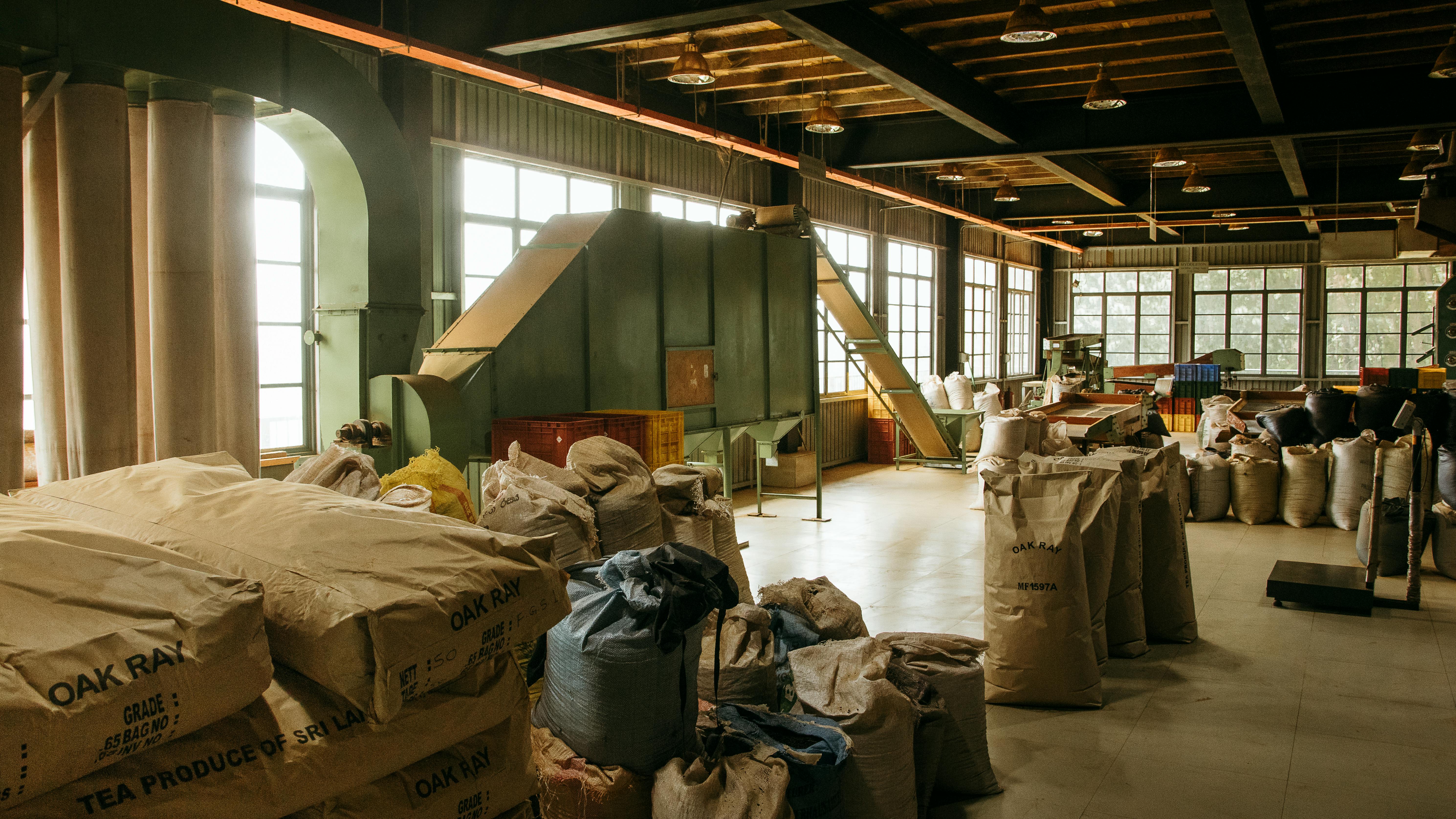The invention of the tea bag is an interesting and often contested story. Though the exact origin of the tea bag is unclear, most accounts trace its origins back to early twentieth century America. The first tea bags were simple muslin bags filled with tea leaves, much like those used in traditional Chinese and Japanese teas. While these early tea bags were not widely accepted, they paved the way for more modern versions of the tea bag that we know today. In this article, we’ll look at the history of the tea bag and explore how it has evolved over time.Tea bags were invented in the United States by Thomas Sullivan in 1904.
Origin of Tea Bag Invention
The origin of tea bag invention is credited to a New York tea merchant named Thomas Sullivan. In the early 1900s, Sullivan had the idea of sending out samples of his tea in small silken bags. He thought it would be easier and less expensive than sending out the loose tea leaves. Little did he know that his customers would actually mistake these small bags for actual teabags, and place them directly into hot water to make a cup of tea! Sullivan’s customers began writing back to him about how much they enjoyed using the tea bags instead of having to measure and strain the loose leaves. This prompted Sullivan to begin selling these “tea bags” as a regular product in his store.
Sullivan’s invention spread quickly, and other companies began making their own versions of the teabag. The modern-day version was invented in 1908 by American tea merchant William McLaren, who created a special paper envelope that could withstand boiling water without tearing or leaking. Soon, almost all major tea companies were producing teabags in various shapes and sizes.
Today, teabags are used all over the world as a convenient way to make a cup of tea without having to measure out loose leaves or strain them afterwards. They have come a long way since their humble beginnings with Thomas Sullivan and his samples, but they still remain one of the most popular ways to make a cup of tea today!
Who Invented the Tea Bag?
The modern tea bag was first invented by Thomas Sullivan in 1904. Sullivan sent his tea samples to his customers in small silk bags, not realizing that they would steep the tea directly in the bag. His customers liked the idea of being able to steep their tea directly, and thus, the modern tea bag was born.
Sullivan’s tea bags were made from silk and held about 2-3 grams of loose leaf tea per bag. This was an innovative way to make tea as it was much easier and faster than using a teapot or strainer with loose leaves. Over time, other companies began to manufacture their own versions of Sullivan’s silk bags, and eventually, paper bags replaced silk as they were cheaper to produce.
Today, most teabags are made out of filter paper with a string attached for easy removal from hot water. There are many different types of teabags available on the market today such as pyramid-shaped bags, herbal infusions, flavored teas, and even “no mess” individually wrapped bags. Tea bags have revolutionized how we make and consume tea by making it much easier and faster than ever before!
History of the Tea Bag
The tea bag has revolutionized how people enjoy their tea. Before the invention of the tea bag, people had to use loose-leaf teas, which were messy and time-consuming. The tea bag was invented by a British tea merchant in 1908, who wanted to make it easier for people to make a cup of tea. The original tea bags were made out of silk fabric, with loose-leaf tea inside. These bags were not popular at first, but eventually they caught on and became widely accepted.
In the 1940s, a new type of tea bag was developed that used paper instead of silk fabric. This made it much cheaper to produce and distribute, and soon became the industry standard. The paper bags also allowed for more flavor to be infused into each cup of tea due to their larger surface area. Today, most commercial teas come in paper bags that are either square or round in shape.
In recent years, there has been an increased focus on sustainability when it comes to packaging materials for teas. Many companies have switched from using paper bags to using biodegradable materials such as cornstarch or bamboo fibers. There is also an increased demand for organic and ethically sourced teas that come in eco-friendly packaging materials such as recycled paper or plant-based plastics.
The invention of the tea bag has revolutionized how we make and enjoy our cups of tea today. From its humble beginnings as a silk pouch filled with loose-leaf teas, it has evolved into a convenient and cost-effective way to enjoy a cup of your favorite brew any time you want!
The First Use of Tea Bags
Tea bags have been a staple in many homes and restaurants for decades, but their origins are surprisingly recent. They were invented in 1908 by Thomas Sullivan, an American tea merchant, who sent samples of his tea leaves to customers in small silken bags. Sullivan likely didn’t intend for the material to be used as a brewing device, but some customers assumed that was the purpose and put the bags into their cups of hot water. To Sullivan’s surprise, they liked the convenience of the tea bags and he soon began selling them as such.
Since then, tea bags have gone through numerous changes and improvements, from mesh fabric filters to paper tags to individual packaging. Today, they are used all over the world for both traditional loose leaf teas and herbal infusions, making it easier than ever to make a cup of hot tea with minimal effort.

When Were Tea Bags Invented?
Tea bags were invented in the early 1900s by Thomas Sullivan, an American tea merchant. He began sending samples of tea to his customers in small silken bags, which they mistakenly assumed were meant to be steeped in hot water. Realizing the potential of this accidental invention, Sullivan began marketing and selling tea bags commercially in 1904. Tea bags quickly became popular, as they made preparing a cup of tea much easier and less messy than other methods.
The first tea bags were made of silk and gauze material, similar to what Sullivan had been using for his samples. By the 1950s, paper-based tea bags had become commonplace, with many different varieties and flavors available on the market. Over time, manufacturers have developed a variety of shapes and sizes for tea bags to suit different needs and preferences. Today, most people use simple rectangular or round paper-based tea bags when making a cup of tea.
Why Were Tea Bags Invented?
Tea bags were invented in the early 1900s by a tea merchant named Thomas Sullivan. Sullivan was looking for a way to reduce the cost of shipping tea to customers, as loose tea was very expensive to package and ship. He decided to send samples of his tea in small silk bags, expecting customers to remove the tea from the bag and place it directly into their teapots. However, many customers simply left the tea in the bag and brewed it that way. Realizing that this was an easier and more cost-effective method for brewing tea, Sullivan patented his invention in 1903 and began selling pre-packaged tea bags commercially.
Today, tea bags are one of the most popular ways to brew a cup of tea, as they are convenient and easy to use. They also come in a range of sizes and styles, allowing users to find the perfect one for their needs. For example, some brands offer single-serve bags that can be used for individual cups or mugs, while others offer larger bags that can brew an entire pot of tea. Tea bags also come in different materials such as paper or biodegradable mesh fabric, giving consumers even more options when it comes to selecting their favorite type of tea bag.
The Evolution of the Tea Bag
The tea bag is one of the most popular and widely used methods for brewing tea. It has come a long way since its invention in 1908 by Thomas Sullivan, an American tea merchant. The original idea was to give out his teas in small silken bags as samples, however customers mistook them for actual tea bags and began using them to make their own tea.
Sullivan’s first tea bags were made from silk, with a drawstring at the top to close it off. This design was not very efficient as it could not be reused and had to be disposed of after each use. Over time, other materials such as paper or gauze were used instead of silk, which allowed for multiple uses before needing to be discarded.
In the 1950s, improvements in technology allowed for the development of heat-sealed paper tea bags that could be mass-produced at a much lower cost than the hand-made silk versions. This design featured a small tab at the top of the bag that allowed it to be hung from a cup or pot for easy removal after steeping. It also featured a filter material inside that kept the leaves from entering into the cup when in use.
Today, there are many different types of tea bags available on the market. Some are designed for single-use while others are made with thicker materials such as mesh or nylon that allow them to be re-used several times without becoming clogged or deteriorating in quality. Many modern designs also include tags or strings attached so they can easily be removed after steeping without having to fish them out with a spoon.
Overall, the evolution of the humble tea bag has come along way since its invention over 100 years ago. From its original silk design to modern day nylon and mesh varieties, there is now an almost endless variety of options available when it comes to brewing your favorite cup of tea!

Conclusion
The invention of the tea bag by Thomas Sullivan in 1908 revolutionized the way we enjoy tea. His simple yet effective design has been embraced and improved upon in the more than 100 years since, creating an industry that is estimated to be worth over $10 billion today. Tea bags are now a staple in coffee shops, hotels, and homes around the world. Tea bags not only provide convenience and ease of use but offer a wide variety of flavor options that can be enjoyed by everyone regardless of experience level. The invention of the tea bag has made it possible for tea lovers around the world to enjoy their favorite beverage with ease and convenience.
Overall, it is clear that the invention of the tea bag by Thomas Sullivan was a major milestone in the history of tea. His creative solution revolutionized how people enjoyed their tea and spawned an entire industry devoted to producing different varieties of flavors and styles. Thanks to his innovation, millions of people around the world are now able to easily enjoy their favorite cup of tea.
